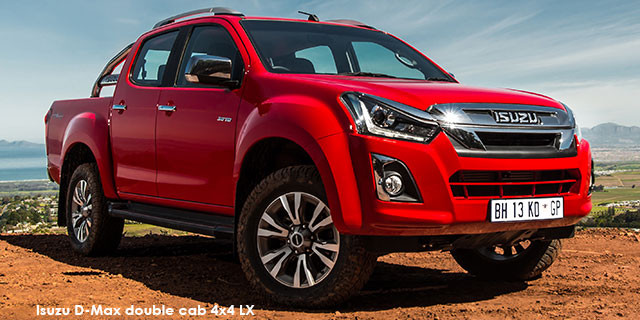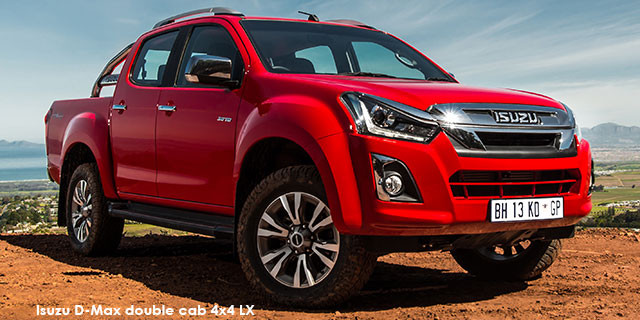Can this rebadged favourite keep up with the fresher opposition? We test the Isuzu D-Max DC 3,0 TD 4x4 LX...
The venerable, locally built KB may have incurred a name change to the internationally standard D-Max but it’s still the same bakkie which has found many faithful followers over the years. Of course, if it wasn’t for the Toyota Hilux and Ford Ranger, sales would have been even higher.
Talking of the Hilux, it’s interesting that, when it comes to second-hand value, often the older Toyota Fortuners and Hiluxes with 3,0-litre D4-D engines fetch higher prices than the newer models of the same year. This is simply because of owners’ awareness of longevity over years of experience, weighed against the as-yet unproven latest technology.
But we digress. In the case of the Isuzu, proven technology is a very good thing: the 3,0-litre turbodiesel engine is still the same so we know it’s game for unstressed high mileages. Nevertheless, it has started showing its age; it’s a bit too noisy and just slightly rough at low revs. It needs 1 800 r/min to start pulling its weight and so the six-speed manual gearbox has to be stirred frequently. Stirred is the correct word, too; the ‘box action remains somewhat vague and reverse gear is too close to first so it’s easy to make a mistake and go backwards.
Some years back, the KB was known for its superior ride quality. Perhaps we are spoilt with progress but the game has moved on and most newer rivals are better at coping with bumps than the D-Max. This model also sports 18-inch wheels which increase stiffness somewhat. Steering is still hydraulically assisted and has a medium to heavy action and the directional stability gets a little upset in strong winds, but the D-Max otherwise makes effortless progress.
The inside, conversely, shows no lack of progress. A new eight-inch touchscreen with sat-nav, HDMI ports and DVD playback is fitted, as per the MU-X, and the reverse camera displays accurate parking limits and is clearly legible on the screen. There are two USB ports: one for charging phones and one for audio playback. However, you may need a small screwdriver to open the stiff latter port.
Otherwise, interior ergonomics are acceptable, save for a few items. The traction control and diff-lock buttons are hidden behind the steering wheel. The mirror controls are low and to the right of the dash while the start button is even lower, just ahead of your left knee. There are auto door locks and foldable mirrors but no auto lights-on option. The consumption computer features instantaneous and average figures to monitor driving style.
The performance of this test unit was slightly down on our previous KB300 test in 2013 so we looked up that test and discovered the D-Max weighs exactly 100 kg more than that test unit, at 2 141 kg, which should account for the half-second delay to 100 km/h from stationary. When you are up to 120 km/h, the D-Max settles into a loping gait. The revs are just above 2 000 r/min and the engine smooth; however, pottering about town is not the best scenario for this bakkie. Perhaps the new six-speed automatic transmission would be a better bet.
The payload for this version is 972 kg and the maximum braked tow rating 2 900 kg (trailer-sway control is now added). A neatly integrated towbar is standard, the ground clearance of 220 mm adds to off-road abilities and, on the safety side, six airbags and stability control are included. The manufacturer’s warranty is five years or 120 000 km and a five-year/90 000 km service plan is included.
TEST SUMMARY
The aged D-Max may not be the best leisure double-cab but it’s earned its stripes thanks to an impressive reputation for reliability. It has all the luxuries and safety items we appreciate in a R600k family vehicle – give or take one or two spec anomalies that can be attributed to the vehicle’s age – and it’s capable of going anywhere in Africa, repeatedly.
It could be argued it remains a top-notch farmer’s and business owner’s vehicle, but lifestyle users may want to look elsewhere. Isuzu owners, however, are a loyal bunch and they’ll undoubtedly be happy with the tweaks the Japanese brand has made.
ROAD TEST SCORE

|

|

|
Original article from Car









